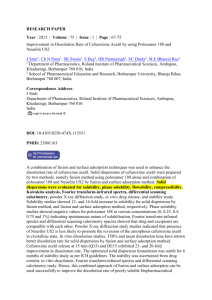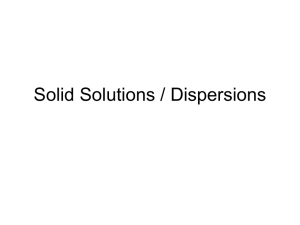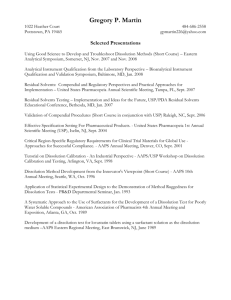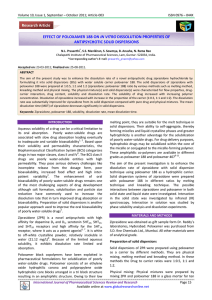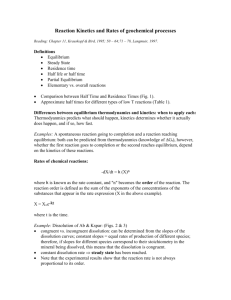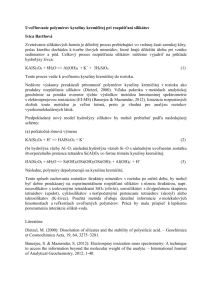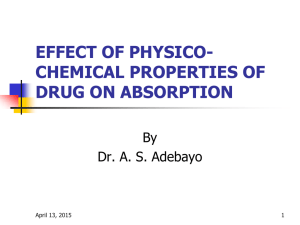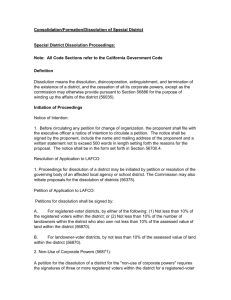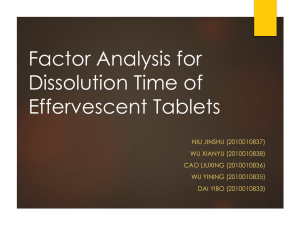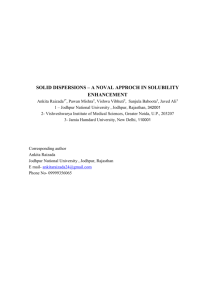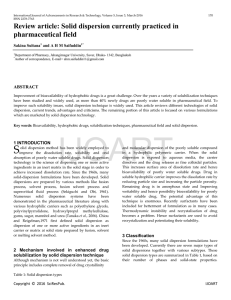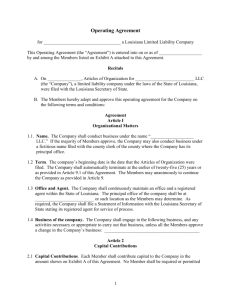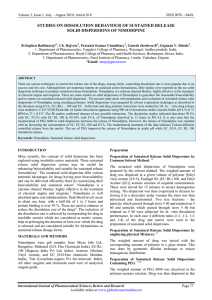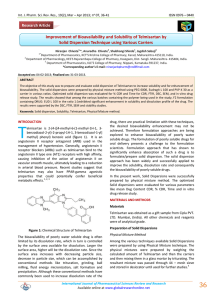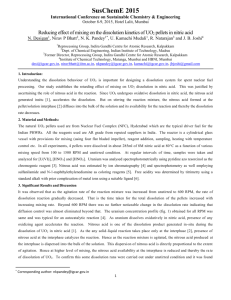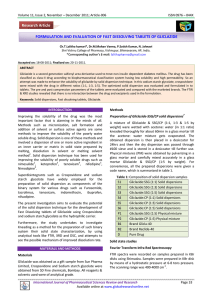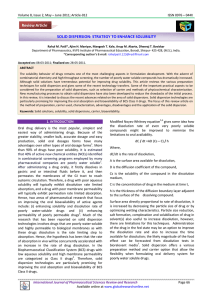Abstract Improving dissolution of poorly
advertisement
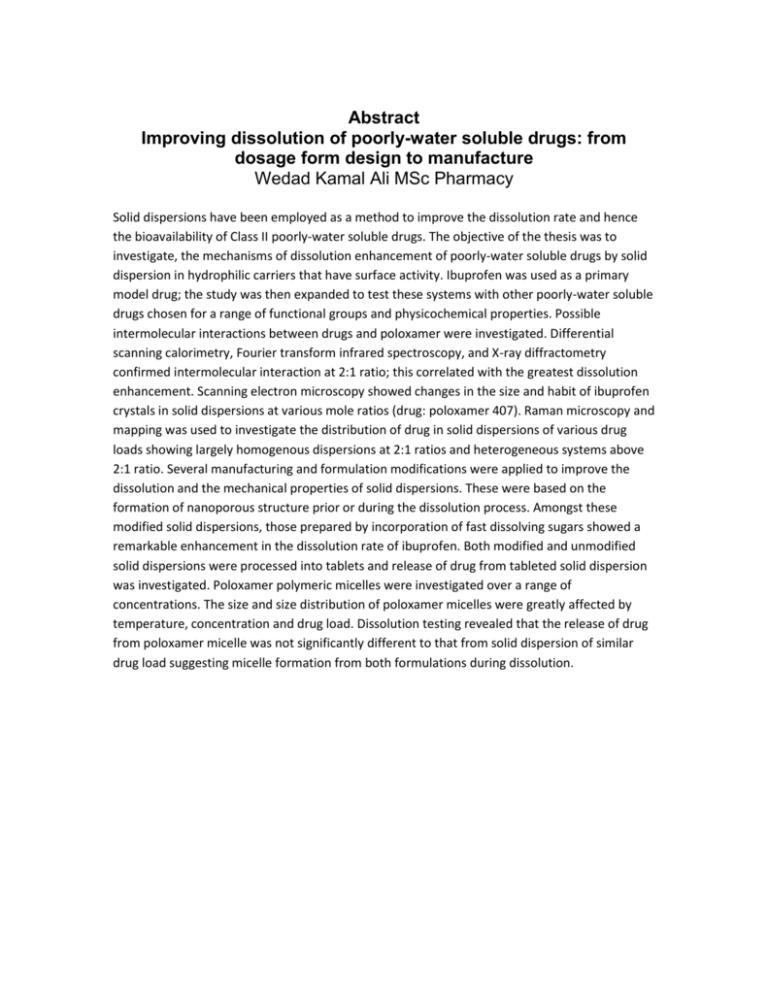
Abstract Improving dissolution of poorly-water soluble drugs: from dosage form design to manufacture Wedad Kamal Ali MSc Pharmacy Solid dispersions have been employed as a method to improve the dissolution rate and hence the bioavailability of Class II poorly-water soluble drugs. The objective of the thesis was to investigate, the mechanisms of dissolution enhancement of poorly-water soluble drugs by solid dispersion in hydrophilic carriers that have surface activity. Ibuprofen was used as a primary model drug; the study was then expanded to test these systems with other poorly-water soluble drugs chosen for a range of functional groups and physicochemical properties. Possible intermolecular interactions between drugs and poloxamer were investigated. Differential scanning calorimetry, Fourier transform infrared spectroscopy, and X-ray diffractometry confirmed intermolecular interaction at 2:1 ratio; this correlated with the greatest dissolution enhancement. Scanning electron microscopy showed changes in the size and habit of ibuprofen crystals in solid dispersions at various mole ratios (drug: poloxamer 407). Raman microscopy and mapping was used to investigate the distribution of drug in solid dispersions of various drug loads showing largely homogenous dispersions at 2:1 ratios and heterogeneous systems above 2:1 ratio. Several manufacturing and formulation modifications were applied to improve the dissolution and the mechanical properties of solid dispersions. These were based on the formation of nanoporous structure prior or during the dissolution process. Amongst these modified solid dispersions, those prepared by incorporation of fast dissolving sugars showed a remarkable enhancement in the dissolution rate of ibuprofen. Both modified and unmodified solid dispersions were processed into tablets and release of drug from tableted solid dispersion was investigated. Poloxamer polymeric micelles were investigated over a range of concentrations. The size and size distribution of poloxamer micelles were greatly affected by temperature, concentration and drug load. Dissolution testing revealed that the release of drug from poloxamer micelle was not significantly different to that from solid dispersion of similar drug load suggesting micelle formation from both formulations during dissolution.


